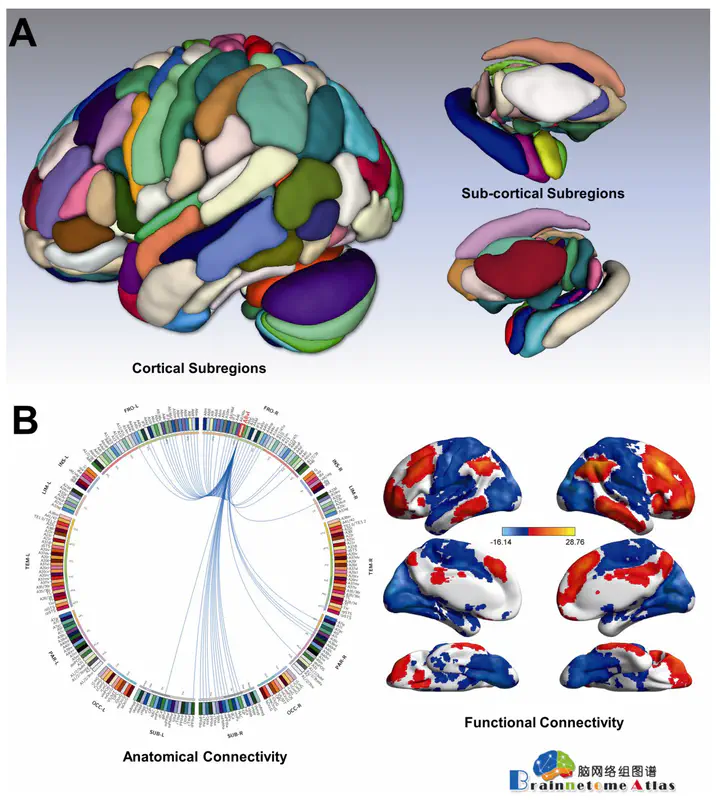 The human Brainnetome Atlas
The human Brainnetome AtlasAbstract
Brain atlases are considered to be the cornerstone of neuroscience, but most available brain atlases lack fine-grained parcellation results and do not provide information about functionally important connectivity. Recently, novel methodologies and computerized brain mapping techniques could be used to explore the structure, function, and spatio-temporal changes in the human brain. The human Brainnetome Atlas is an in vivo map that includes fine-grained functional brain subregions and detailed anatomical and functional connection patterns for each area. These features should enable researchers to describe the large scale architecture of the human brain more accurately. Using the human Brainnetome Atlas, researchers could simulate and model brain networks using informatics and simulation technologies to elucidate the basic organizing principles of the brain. Others could use this same atlas to design novel neuromorphic systems that are inspired by the architecture of the brain. Therefore, this cutting-edge human Brainnetome Atlas paves the way for constructing an even more fine-grained atlas of the human brain and offers the potential for applications in brain-inspired computing.